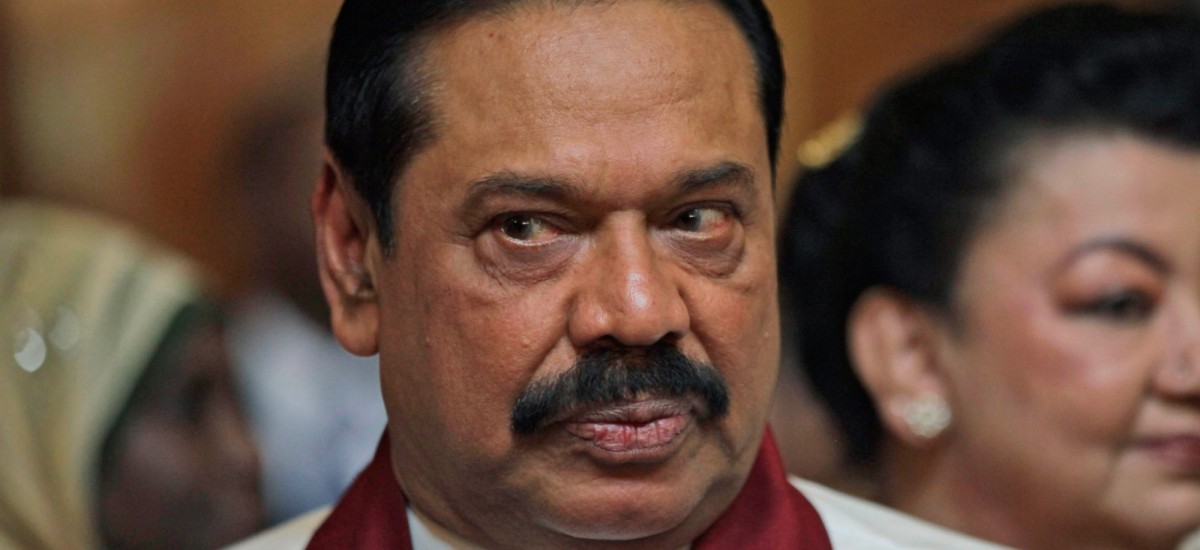Photo courtesy Fatalnews
As nominations closed earlier this week, the contours of the battle lines for the general election to Parliament became clear. The two major political formations in the country, the UNP and the UPFA are vying for a parliamentary majority and with it effective control of the next government.
The UNP spent an useful weekend, creating a broad political front, styled the United National Front for Good Governance, (UNFGG) which will contest the elections under the UNP’s elephant symbol and be registered as a party after the elections. The UNFGG is a broad rainbow alliance, much like the NDF of January this year, having in its spectrum, the Sinhala nationalist JHU to the ethnic minority parties, including the SLMC, the breakaway Maithri faction of the SLFP and the up country political parties with the dominant UNP in the center. The UNFGG, as successor to the NDF, are clear favorites to win the elections, not least because of the myriad of problems that beset the UPFA.
A declining trend for the UPFA
A quick analysis of elections results from early 2014, shows the UPFA in a steady decline from the Western and Southern Provincial Council elections of early 2014, to a more comprehensive near loss at the Uva provincial elections in October last year and of course its historic and monumental loss by over half a million votes in the presidential elections of 2015. There is little reasons for the trend to not continue (with Arjuna Mahendran’s alleged foibles hardly a game changer) and the UPFA is headed for a more ignominious defeat.
While the UNP has reinvented itself by having the JHU to guard its Sinhala nationalist flank, the UPFA has lost its sole Tamil alley of the EPDP, now going solo in Jaffna and as well as having lost all its Muslim allies in January itself. The presence of both AHM Fowzi and Faizer Mustapha on the national list and not contesting, is a clear indication, that the UPFA let alone elect a Muslim is unlikely to get a single Muslim vote, almost.
The UPFA nostalgia for Rajapakse
The presence of the discredited and defeated former President Rajapakse, in practice leading the UPFA’s electoral effort to a mono ethno religious, rural Sinhala Buddhist voter base needs to be understood in the context of two factors. Firstly, President Maithripala Sirisena was seen as unwilling to be a partisan leader of his own political party, the SLFP. Especially in an electoral contest in which his political allies were vying for parliamentary seats as well as in governance since January, President Sirisena has played the role of umpire, rather than that of captain of the SLFP. This left the SLFP in a dilemma since they obviously did not want to face the hustling led by Opposition Leader Nimal Siripala De Silva, who failed to secure the Badulla District for the UPFA in the last provincial poll, let alone lead in the country. Since Rajapakse had been nursing a dynastic project, his sudden defeat left a leadership vacuum, which President Sirisena as the opponent who defeated him could not really fill, as was demonstrated by his party continuing to be in opposition, while he headed the government.
UPFA out of ideas in the midst of declining support
This writer way back in 2010, had both in private and in the press, advised the then Rajapakse Administration, that it had maxed out on Sinhala nationalist support. In other words, it had moved so far to a Sinhala nationalist political hue, that it could not hope to ever increase its support by being more nationalist than it already was. There are no additional votes to be got by being more Sinhala nationalist than it already was. The only socio political space more extreme than Mahinda Rajapakse, was overt communal violence and at the tail end of the Rajapakse regime, even that was unleashed with impunity from Dambulla to Dharga Town. So increasing voter support for the UPFA meant a shift to the center. That is a shift it has failed to do. Out of ideas, stuck in the past and morally and intellectually bankrupt, the UPFA will be ratcheting up the rhetoric and engaging in the same racist hate mongering and fear peddling which is its only stock in trade and the only language that its gang of four, the main non SLFP leaders of the “Bring back Mahinda Campaign” understand.
Protecting the January 8th People’s Revolution
On January 8th this year, the non populist, lesser known, non iconic and soft spoken presidential candidate Maithripala Sirisena, defeated the larger than life, populist and war win glory hugging, two term incumbent Mahinda Rajapakse. Mahinda Rajapakse won every aspect of the January election campaign, he won the poster war, we were smiled down at every street corner by North Korean dictator style giant cutouts, the state media, especially electronic gave a totally monopoly to Mahinda Rajapakse and slandered Maithripala Sirisena. The Telecommunications Regulatory Commission released Rupees six hundred million for giveaways to voters and despite all this Mahinda lost. Even the pre dawn attempt to stop the vote count, complete with advice by the interloper who impersonated as the Chief Justice for two years, was unsuccessful as the public, the officials, observers, security forces and international community saw the writing on the wall. Mahinda Rajapakse’s astrologers, magicians and soothsayers had been wrong about his reelection prospects and they and his political allies are similarly wrong about his rather misguided attempt at a political come back. The country needs a better opposition leader than Mahinda Rajapakse.
(The writer is the Chairman of the Resettlement Authority, the views expressed are personal)

